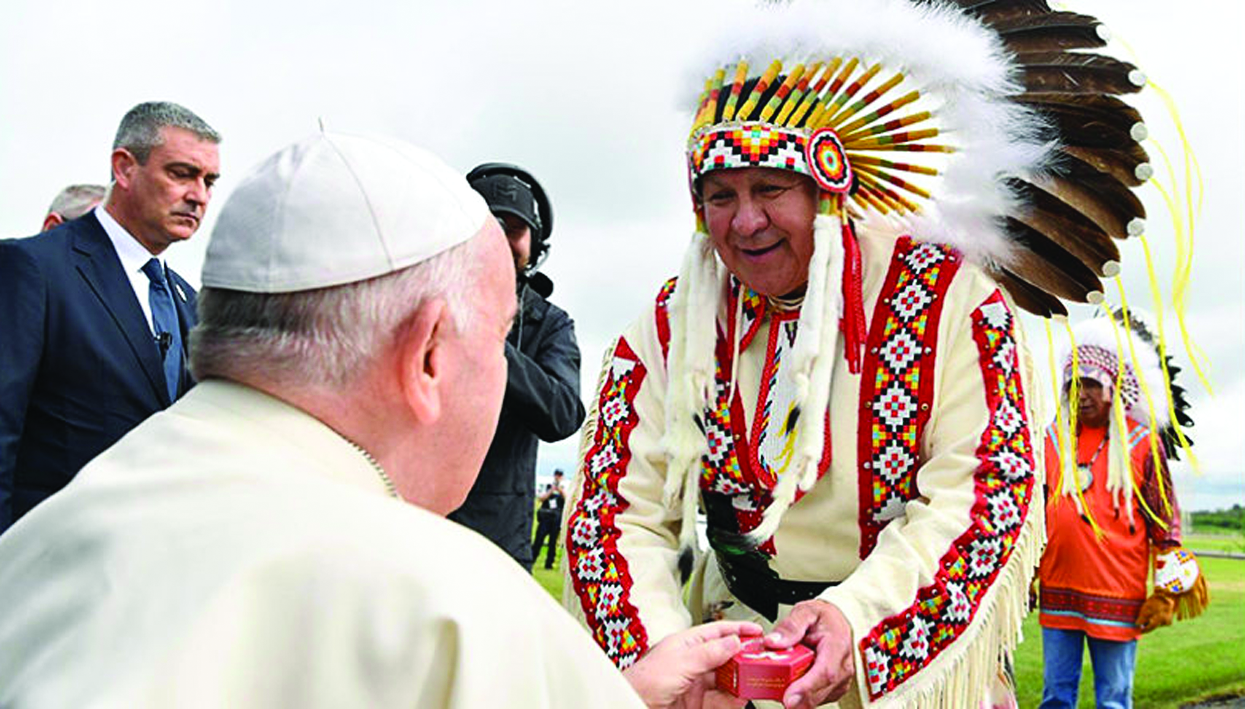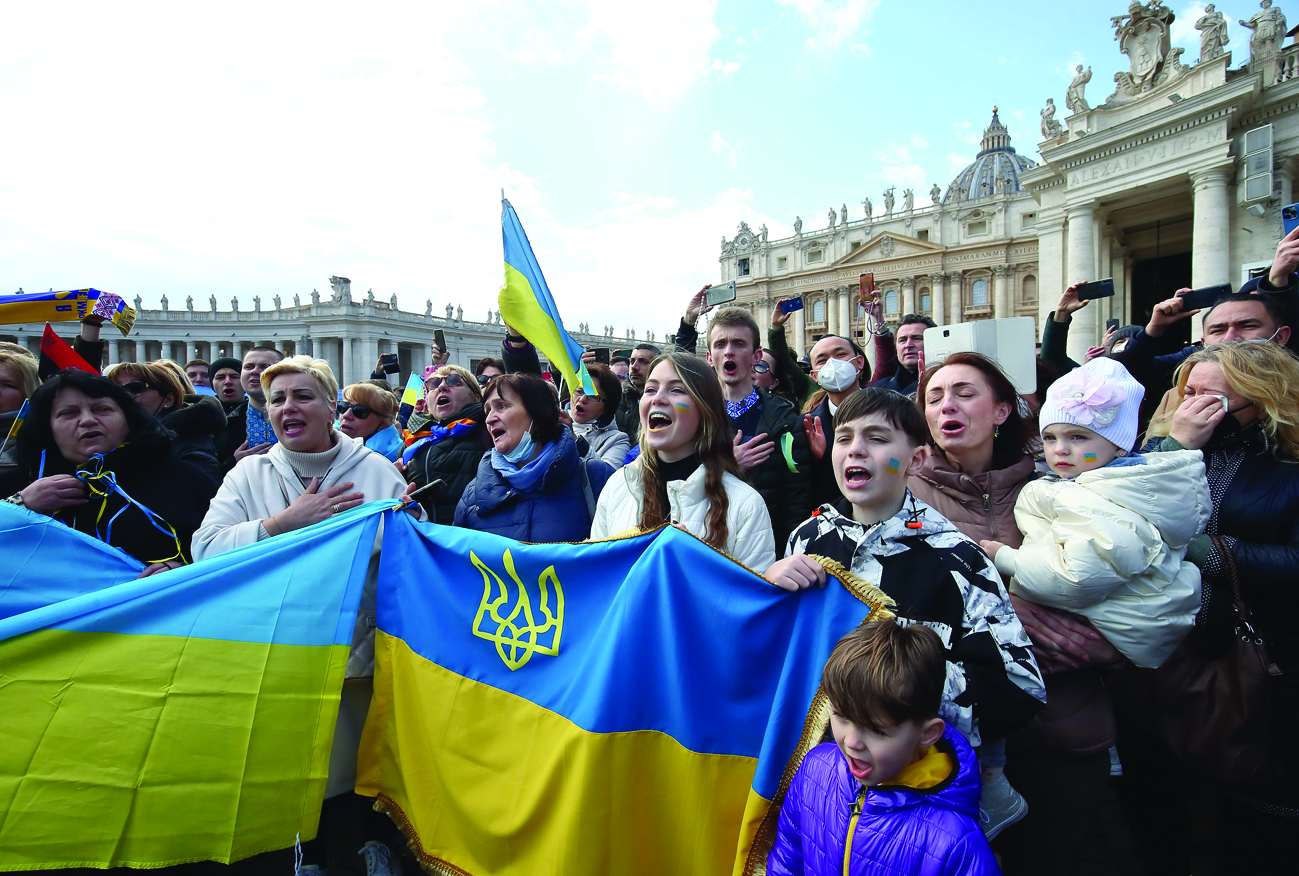The Swiss Guard Band usually performs a Christmas concert each december in St. Peters Square. Here a brief history of the band of the Pontifical Swiss Guard.
One of the newest Christmas traditions in the Vatican is the Pope’s visit to a larger-than-life Nativity Scene in St. Peter’s Square on December 31 after Vespers in the Vatican Basilica in thanksgiving for the end of the civil year. The tradition was started by John Paul II and continued by his successor, Benedict XVI, while Pope Francis’s style of celebrating Christmas is not yet known.
On the occasion of these papal visits, the Band of the Swiss Guard gives him a small Christmas concert.
I spoke with the President of the Swiss Guard Band, Sergeant Heinz Eggli, about the history and life of the band.
“In Switzerland, musical traditions are very strong,” he told me. “Almost every town, even very small ones, has its own band, and children learn to play flutes and horns at a young age. Music traditions are also very strong in families and we are happy to have many guards in our barracks who can help to contribute a joyful spirit with folk music.”
The aim of the Swiss Guard Band has remained unchanged since 1881 — when it was created in a very spontaneous way — and it is to deepen the harmony of the Corps. “Playing instruments is, for the members of the Band, only a pastime, as our main task is our service to the Holy See as Swiss Guards,” Eggli said. “For that reason, our concerts take place mostly at internal celebrations, or with the Holy Father, for whom our Band exists. Being a part of the ‘Vatican army,’ we can’t play outside the Vatican walls without the permission of the Secretariat of State. But in Switzerland, there is a Band of former guards.”
The history of the Band of the Pontifical Swiss Guard is not well known. The information on the Band in the Swiss Guard Archives is quite scarce. One can find little detailed information there on the Band’s origin and history.
Although the modern beginnings of the band date to 1881, the first Swiss Guard musicians — drummers (tamburi) and pipers (pifferai) — arrived on foot together with the other original Swiss Guards in 1506. For nearly 400 years, there was no formal Band to play at the Corps events and celebrations. Then, in the year 1881, the regular Band was started.
It occurred in a very simple and unexpected way: some Swiss Guards who were musicians met to make a concert for other colleagues. Thus, a regular group was started. In 2006, when the 500th Anniversary of the foundation of the Pontifical Swiss Guard was celebrated, the Band was recognized as an official, special group of the Corps.
“Until that moment,” explains Sergeant Eggli, “it was simply a group of the Guards who played music to entertain friends and guests and to reinforce harmony in the Corps, but since 2006 we have been officially organized and we are under the disciplinary and administrative rules of the Pontifical Swiss Guard Command.”
The composition of the musicians and instruments changes every few months as the members of the Corps change regularly (young Swiss Guards usually serve for only a basic requested period of time which lasts 25 months). This means a continuous change of musicians, instruments and musical ability. This also the reason why there aren’t very many major events during a year at which the Swiss Guard Band play.
“As we simply do not know the composition of the Band in the coming six months, we can’t accept any invitations for concerts outside of Vatican City,” Eggli said. “The number of members varies. Sometimes we are many, sometimes only a handful. All the Swiss Guards who know how to play an instrument can take part of the Band. We are happy that always about one quarter (Note: about 25) of the Guards can play an instrument.”
Among the instruments played by the Swiss Guard Band are all the classical ones used in any traditional military band: trumpets, clarinets, saxophones, trombones, and drums.
The structure of the Band is as follows: a Maestro, a President, a governing Committee, and the musicians. The Maestro is appointed by the Swiss Guard’s Commandant. Usually, the musicians can propose to the Commandant an appropriate member to direct them. The President is responsible mainly for the organization of the Band. The Committee exists to manage necessities. All of them are members of the Pontifical Swiss Guard, so are under the Commandant.
The drummers today can be distinguished from others Swiss Guards by their use of a different uniform.
“Regular” Swiss Guards wear a three-color Medici family uniform (blue-yellow-red), while the uniform reserved for the Band members and above all the drummers is a yellow-blue-black one which represent the colors of the coat-of-arms of Commander Pfyffer von Altishofen. (Johann Rudolf Pfyffer von Altishofen, 1615-May 17, 1657, was the Commander of the Swiss Guard from 1652 to 1657, protecting Popes Innocent X and Alexander VII in Rome.)
The central moment of the life of the Band is of course May 6, the day of the swearing-in ceremony. The Band on that occasion offers a short concert. In the repertoire there is traditional Swiss military music but also modern pop songs such as: “One moment in time,” “Go West,” “Highland Cathedral” and “Copacabana.”
The other unique and special moment is a small concert for the Pope when he goes to St. Peter’s Square, traditionally on December 31 to visit the Nativity Scene near the obelisk.
Since 2011 there have been Advent concerts of the Band together with Daniela Lorenz, a professional harpist, in the Teutonicum Church in the Vatican. From that collaboration, a Christmas CD of the Band’s music was born. This is the second CD disc in the history of the Band. The first was issued in 1979 with traditional Swiss military music.
Eggli, the President of the Band, is also a musician. “I play the cornet,” he said. “Even as a child, I played the trumpet. I like to do something for others and also to share a spirit of friendship after the rehearsals.”

Pope John Paul II with the band on June 10, 1992, following his return from Angola in southern Africa.











Facebook Comments